Velard is currently an Artist-in-Residence at Joe’s Pub in New York, where he’s working on building a show around the songs from throughout his career. In the meantime, he’s about to go on tour to promote Fancy Words, and you can see all of the dates here.
We spoke with Velard about the song, the musical that inspired it, and how it all fits into the context of the record, where his songs form a story of a musician who realizes that stardom will forever be out of reach as he finds happiness in his personal life. As he tells us, it’s autobiographical, but its overall message, that giving up on your dreams can be liberating, is universal. You can read the interview below the video.
This is a little different from the other videos you’ve made. I’m thinking largely of “Love Again for the First Time,” which had a typical, nice-guy, piano-playing, singer-songwriter vibe to it. How did you come about this concept?
The animators are these people call Wefail, and they’re these Flash animators that I’ve been a huge fan of for forever. They kind of got really successful – they did Eminem’s website and the Dixie Chicks’ website. And then, in 2007, the iPhone launched, and the iPhone wouldn’t process Flash. So their whole vehicle for this counter-culture, subversive – but darkly funny – type of sensibility through Flash animation got a real bump in it.
Right around that time I was really fortunate to get EMI to get them to design my website. It was this crazy website that was all based on movies. It was like a big video game and I’m still obsessed with it. It still lives on the internet so you can see their true genius at work. Then they moved on to making apps, but I’d been wanting to do a music video with them for a while. We couldn’t figure out the budget stuff.
I just had a baby, and getting the record done in time [for the baby’s arrival] was a struggle, so making a live-action music video was out of the question. So I reached out to them and said, “I have this song. Will you do it for this much? Here are some basic ideas of what I’m looking for and you guys can do whatever you want and I’ll say, ‘Yes.’” And they were like, “OK.”
They took the loose concepts that I had and created this universe of me performing this messed-up version of Hamilton, where I’m getting into fights with Ed Sheeran and Lin-Manuel Miranda, which is a decent lyrical approximation of this new record.
What’s really funny is the randomness to the people who show up on stage. Ed Sheeran and Billy Joel are expected, and you get body-slammed by Miranda. But there’s also Bob Dylan, Morrissey, and Jeff Lynne – and the Mystery Science Theater 3000 cast is watching it.
Right, which implies this deeper meaning that it’s clearly a failed musical, because why would MST3K be watching it if it wasn’t the worst thing ever made?
Given that you’re a musician, and a New Yorker in your mid-to-late 30s, would it be safe to assume that Hamilton has been a major topic of conversation in your social circles for the past year-and-a-half or so?
Yeah. I think the mistake that a lot of people make when they talk about the song is that I hate the musical Hamilton. The irony is that, when I wrote it and right up until the album’s release, I hadn’t seen the show. There’s a reference to this in the bridge (“I’ve listened to the soundtrack and I think that it’s OK“). So this guy in the song is spewing all this vitriol and frustration centered on the musical but it’s not even clear if he’s seen it, which I think makes the song more interesting.
But really the song is about – and fitting into the concept of the record – the feeling that you haven’t found your vehicle yet and that it hasn’t been recognized, and that the thing that you’ve trying to say for your entire career is going unsaid, largely due to resources, but also because that’s how life works, you know? And I think that’s the real message of the song, and Hamilton is this prop, just like the Ed Sheeran song. They’re not about Hamilton or Ed Sheeran; they’re more about the guy singing the songs.
Right. There’s an admission of jealousy towards Lin-Manuel. So basically you’re Aaron Burr to his Hamilton.
Absolutely! I almost wish they had dressed me up like Aaron Burr in the video. That’s exactly what I am.
So are you going to meet him at Weehauken at dawn?
I don’t think there’s going to be a duel. He’s very likable. I have the feeling that if I hung out with him I’d think he was cool, you know? I like him, and he feels like a real New Yorker to me.
And that’s the other thing about Lin-Manuel. You’re both 37, natives of Manhattan – there’s a parallel there.
He’s just three-fourths of the way closer to the EGOT than I am. That’s the only difference. Wait, he’s that close to the PEGOT, because he won the Pulitzer.
But you did see it, and did your feelings about the show change once you saw the staging and the whole production?
I don’t know if I like musical theater. I love narrative songs; I love storytelling. But as my wife – a musical theater performer who’s been on national tours and has her Equity card (and is also in the video) – pointed out to me, theater is about the experience – the experience of going to the theater. It’s not necessarily always about the narrative structure or about the storytelling. And, I think, in that respect, Hamilton was a unique experience and I’ve never seen anything like it before.
I wasn’t fortunate enough to see it with the original cast, which seems like it was a happening and a moment in time. But, as far as the narrative structure, it’s not necessarily something I would be excited to see again. Then again, I also think, “Who am I to critique that show?” because it’s clearly the work of a genius. You kind of can’t argue with that. It’s indisputable.
In my mind, as much as the anecdotes in the song and the narrative of the album is my story, I don’t necessarily feel like it’s me singing it. Or it’s a version of me in a certain light. The whole idea of the record for me is about gaining the awareness that it’s okay to accept where you are, and that it’s okay to fail. It’s okay to not be what you thought you were going to be.
So in the same way that Mr. Saturday Night was a character that you created, or Larry David on Curb Your Enthusiasm – it’s more of an extension or an exaggeration of one part of your personality?
Mr. Saturday Night was much more of an identity. This is me; this is my story, no doubt. But I’m able to take a perspective outside of myself. What I’d like to think that the people who get into my records find endearing is that it’s like listening to Billy Joel or Randy Newman records – or maybe more like Billy Joel, because Randy Newman’s never himself, except on the later records – but with a self-awareness.
My harshest critique of Billy Joel is that he’s painfully not self-aware. And that’s both the beauty of him and his Achilles heel. In interviews, he still doesn’t understand why he’s not regarded in the same light as Bob Dylan. And you wanna be like, “Dude, you’re Billy Joel. That’s pretty awesome. You don’t need to be Bob Dylan.”
“Hamilton” is the first song on the record, and that’s me at my angriest. “Why not me?” That’s the question. And the answer, which I’d like to think you find when you get to the last two songs – “Goodbye Hollywood, Hello Adulthood” and the cover of “The Rainbow Connection” – is, “You know why it’s not you? Because it’s not you. That’s why.”
“The Rainbow Connection” is the explanation, at least the way I interpreted it, that dreams are bullshit. They’re not important. It’s about the action of believing in the dream.
Yeah, you definitely found a darker meaning in that song than has ever been interpreted. It’s right there with the harmonies on the piano. I know Frank LoCrasto is playing the piano, but did you write that arrangement?
He wrote all the arrangements. I outlined the harmonic structure, so I said, “Hey look. These are the voicings that I have in mind, but then just go do your thing on it. This is the tone that I’ve set. I want this level of tension. Explore that space.” So it’s both of our interpretations of the song harmonically.
You were talking about “Goodbye Hollywood, Hello Adulthood,” and “Hamilton” pops up again at the beginning of it. A car starts and “Don’t Ask Me About Hamilton” is playing on the radio. Was that a conscious nod to Billy Joel’s “Say Goodbye to Hollywood?” and the way that song ends?
That’s definitely there, but really this record is my version of the Billy Joel that I always wanted. It’s the guy who understand himself, and that’s what the song’s about. Also I thought having “Don’t Ask Me About Hamilton” play on the radio was a nice thematic thread. It shows the journey the character has taken since the first song. “Remember when he was this angry person? Remember when he didn’t know where he was supposed to be and didn’t understand why Lin-Manuel Miranda is as successful as he is and he’s not?” “Goodbye Hollywood, Hello Adulthood” is the acceptance of that fact and the moving on.
And what helps bring along that acceptance is that, since If You Don’t Like It, You Can Leave, you’ve gotten married and had a child.
I wrote this whole record, with the exception of the Ed Sheeran song, during the pregnancy, After I finished the last record, I got a lot of feedback on this one song, “Jimmy Young,” because of its narrative strain. I wanted to go deeper into that world. So that’s what “Ed Sheeran” was. But I realized that, on its own, “The Night Ed Sheeran Slept on My Couch” felt bizarre, and an angry song to write – like a takedown.
And that’s never the way I see these things. The context is everything. So when you put the Ed Sheeran song in the framework of the whole record, along with the “Hamilton” song, you start to see there’s a much larger picture being painted, and those songs are extremes of a pole. And the answer is sort of in the middle.
So I tried to keep the pregnancy out of it. The only time I mentioned there’s a child is in “Something’s Gotta Be Wrong,” because it’s the last song I wrote and we were seven months in. Some of the anxiety had passed and I was like, “You know, I’m just gonna throw this in here,” because this character that I’ve created is me. There’s no fantasy situation, whereas some of my other records were in this place of “What if this happened?” The album is reading in between the lines and providing context to my life.
“Hamilton,” “Ed Sheeran” and “Trust Is a Four-Letter Word” have, by far, caused the most ruckus with people being like, “Man, you sound bitter” or “You sound angry. What’s your problem?” I’d like to think those songs, taken in context, inform the story and form the narrative. But if you remove them, it’s like “What the hell does this guy feel? Where did this song come from?”
The challenge is that you still have to make yourself sympathetic in the song.
Those songs aren’t supposed to come off as “Poor me,” because that’s never compelling. I wanted to put those songs in a larger context about what it means to pursue a dream. In “Trust Is a Four-Letter Word,” everybody talks about how the cream rises to the top, or the wheat separates from the chaff. First of all, as a New Yorker, I don’t even know what the heck that means – wheat and chaff. I’ve never even seen that. But it’s also the most dismissive, worst answer that anybody can tell somebody, because it’s just like, “If you’re good, just keep doing it and then one day, life will be awesome.”
Anyone who’s done any kind of work where there’s no clear monetary goal in sight – like any freelancer – will tell you that the journey is everything. The journey is how you acquire all the skills and the knowledge. It’s the story that informs the future.
So if you live your life in this land of “It’s going to happen in the future,” it’s reductive, and perhaps the most frustrating thing an artist can hear. And yet, it’s the predominant philosophy of pop culture. People assume that if it’s popular, then it must be good, and if it’s not popular, then it’s not good.
And there are so many other factors involved, like luck and timing, and sometimes other things that are a little seedy.
The key element is timing. And I’d like to think that the character in the album comes to realize, especially at the end of “Goodbye Hollywood,” it’s this idea that every one-trick pony gets a second act. There’s always another end to the story; the story keeps going.
The truly gracious people, and I think the wisest people, who are in the music business will tell you, “Yeah, I got lucky. A break made all the difference. It wasn’t because I made this thing, and it was brilliant, and the world recognized it and I am a better person than everyone else because of it.” But that’s the narrative that society promotes, and that the industry promotes. People don’t want to believe that the universe is random, and chaotic and doesn’t care.
But that is the narrative, that you’re going from “Why aren’t I as big as that guy?” to “I’m kind of cool with it.”
I’m attempting to accept it. That’s why I needed “The Rainbow Connection.” I knew that song was the whole arc of the record, to get people to hear “The Rainbow Connection” in a different light. That is an insanely deep song when you unpack it, because there are so many things going on there. He’s suggesting that dreams are bullshit, but he wants to believe in them anyway.
Yeah, the line, “The lovers, the dreamers and me.” It suggests that he’s neither a lover nor a dreamer.
I do think it’s one of the greatest pop lyrics. It’s up there with the Great American Songbook or Dylan tunes. But it’s cast in this light of the Muppets and this saccharine melody, which makes it even more perverse.
And you’re about to go on tour.
I’m gonna hit the Northeast, a little bit of the Southeast and California. Then I’m gonna go to Europe and do England, Holland and potentially some other countries are in the mix. I waited to get the baby out, and now I’m gonna evangelize the gospel of failure to the masses. And the title of the album is a great excuse for when 12 people come to see me. I look like a genius.
Is it going to be with the full band or solo?
I’m touring with Frank LoCrasto, who played on the record, and we’re doing two keyboards, but at times I’ll be standing up and singing and doing some monologue-type stuff. It’s not going to be like my typical singer-songwriter identity. The arc is going to be more emotional. What I’m trying to do, which is what I’m doing at Joe’s Pub as an Artist-in-Residence, is develop a larger, more narrative context – a real show that these songs live in, that take the emotional arc of the record and make it explicit. I’m experimenting with a bunch of different ways – chronological and other things – but the obstacle I’ve encountered is that these are standalone stories, and with a show, there’s a captive audience, and how do you express what the overall meaning of these songs are. I’m hoping to go into 2018 with something that I may start legitimately workshopping in a theater.
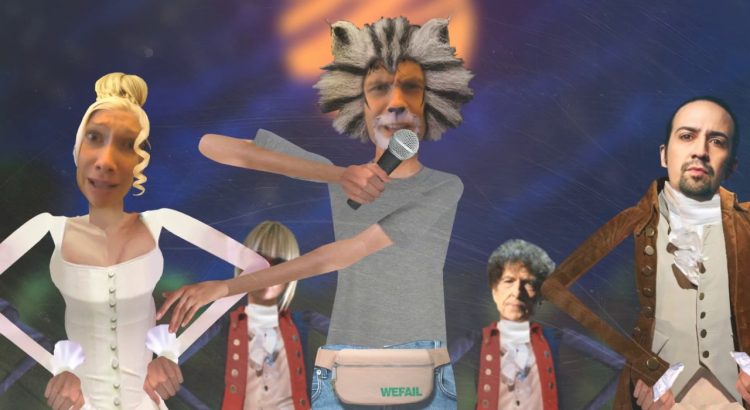
 (Archive.)
(Archive.)


 Honestly I’m having too much fun to care, making my little songs in my little studio. High on adrenaline and punk, I dash off a thrash number inspired by a goofy picture making the rounds on Twitter.
Honestly I’m having too much fun to care, making my little songs in my little studio. High on adrenaline and punk, I dash off a thrash number inspired by a goofy picture making the rounds on Twitter.

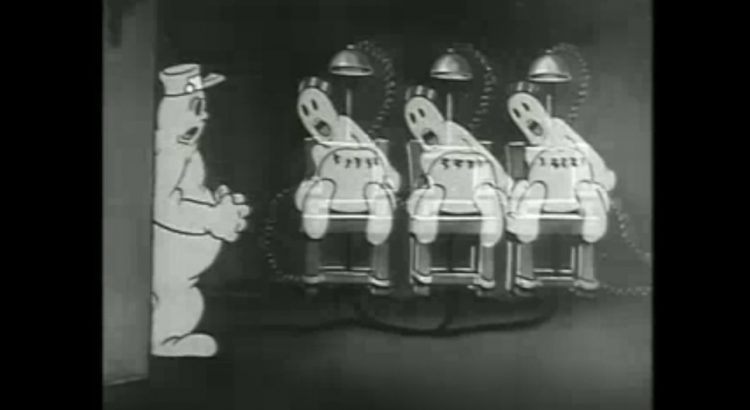

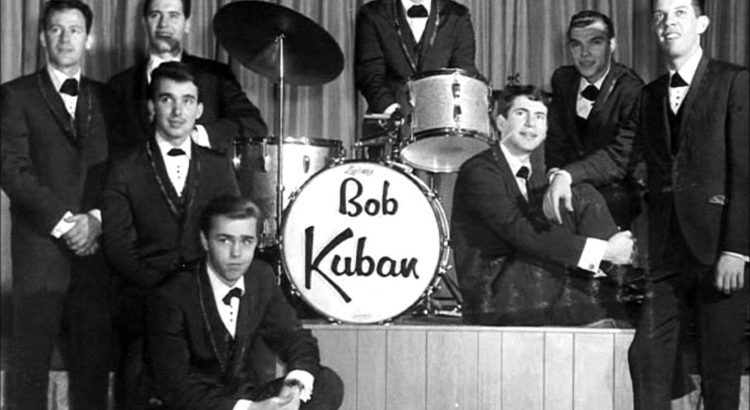


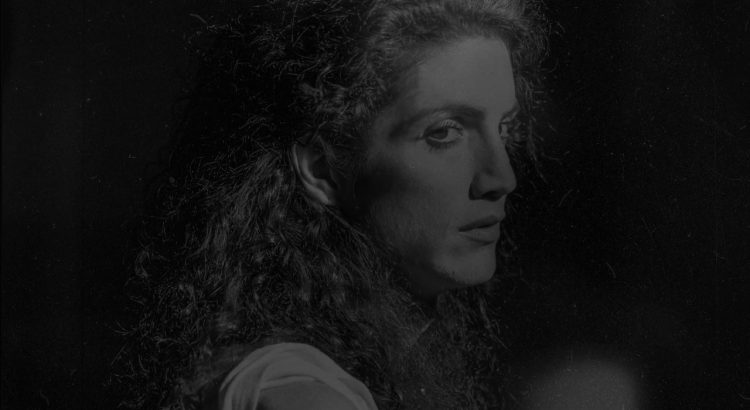

 In the dark days between the end of Mystery Science Theater 3000 and, well, the return of Mystery Science Theater 3000, fans could console themselves with two complementary efforts that continued the show’s legacy: Michael J. Nelson’s Rifftrax and series creator Joel Hodgson’s Cinematic Titanic. While Rifftrax has mocked everything from the Twilight movies to National Geographic specials, Cinematic Titanic stuck firmly to the dregs of the filmic universe, delivering the MST treatment to dire finds like Frankenstein’s Castle of Freaks and Danger of Tiki Island. Featuring Joel alongside J. Elvis (formerly Josh) Weinstein, Trace Beaulieu, Frank Conniff and Mary Jo Pehl, Cinematic Titanic never had an entirely smooth run and Hodgson closed the door on it for good in 2013 — clearing the way, we now know, to bring back MST3K. But it remains essential viewing for any MSTie, and thanks to Shout! Factory, you can do just that with Cinematic Titanic: The Complete Collection, which gathers every film the troupe released, along with a couple of bonus features. As ever, Popdose’s Dan Wiencek and Tony Redman divided and conquered to review all 12 films. And so it begins …
In the dark days between the end of Mystery Science Theater 3000 and, well, the return of Mystery Science Theater 3000, fans could console themselves with two complementary efforts that continued the show’s legacy: Michael J. Nelson’s Rifftrax and series creator Joel Hodgson’s Cinematic Titanic. While Rifftrax has mocked everything from the Twilight movies to National Geographic specials, Cinematic Titanic stuck firmly to the dregs of the filmic universe, delivering the MST treatment to dire finds like Frankenstein’s Castle of Freaks and Danger of Tiki Island. Featuring Joel alongside J. Elvis (formerly Josh) Weinstein, Trace Beaulieu, Frank Conniff and Mary Jo Pehl, Cinematic Titanic never had an entirely smooth run and Hodgson closed the door on it for good in 2013 — clearing the way, we now know, to bring back MST3K. But it remains essential viewing for any MSTie, and thanks to Shout! Factory, you can do just that with Cinematic Titanic: The Complete Collection, which gathers every film the troupe released, along with a couple of bonus features. As ever, Popdose’s Dan Wiencek and Tony Redman divided and conquered to review all 12 films. And so it begins …
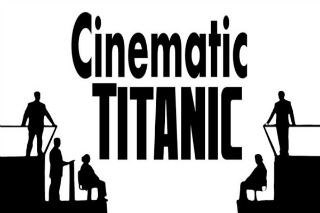 #6. Frankenstein’s Castle of Freaks
#6. Frankenstein’s Castle of Freaks